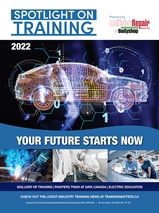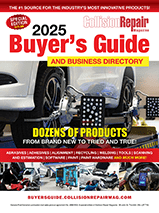- Expects to have about 40,000 to 45,000 vehicles in inventory at end of third quarter lacking certain parts presently in short supply
- Says “vehicles on wheels” awaiting those parts disproportionately include high-demand, high-margin models of popular trucks and SUVs
- Advises that completing such vehicles will shift some revenue and EBIT to Q4; based on recent negotiations, inflation-related Q3 supply costs will be ~$1.0 billion above plan
- Anticipates Q3 adjusted EBIT of between $1.4 billion and $1.7 billion
DEARBORN, Mich.–(BUSINESS WIRE)–Ford again affirmed its expectation for full-year 2022 adjusted earnings before interest and taxes of between $11.5 billion to $12.5 billion, despite limits on availability of certain parts as well as higher payments made to suppliers to account for the effects of inflation.
The supply shortages will result in a higher-than-planned number of “vehicles on wheels” built but remaining in Ford’s inventory awaiting needed parts, at the end of the third quarter. The company believes that those vehicles – an anticipated 40,000 to 45,000 of them, largely high-margin trucks and SUVs – will be completed and sold to dealers during the fourth quarter.
According to the company, based on recent negotiations, inflation-related supplier costs during the third quarter will run about $1.0 billion higher than originally expected.
Ford now anticipates third-quarter adjusted EBIT to be in the range of $1.4 billion and $1.7 billion.
The company intends to announce full third-quarter 2022 financial results – and provide more dimension about expectations for full-year performance – on Wednesday, Oct. 26.
About Ford Motor Company
Ford Motor Company (NYSE: F) is a global company based in Dearborn, Michigan, that is committed to helping build a better world, where every person is free to move and pursue their dreams. The company’s Ford+ plan for growth and value creation combines existing strengths, new capabilities and always-on relationships with customers to enrich experiences for and deepen the loyalty of those customers. Ford develops and delivers innovative, must-have Ford trucks, sport utility vehicles commercial vans and cars and Lincoln luxury vehicles, as well as connected services. Additionally, Ford is establishing leadership positions in mobility solutions, including self-driving technology, and provides financial services through Ford Motor Credit Company. Ford employs about 182,000 people worldwide. More information about the company, its products and Ford Credit is available at corporate.ford.com.
Adjusted EBIT is a non-GAAP financial measure. Ford does not provide guidance on a net income basis, the comparable GAAP measure. Ford’s net income in 2022 will include potentially significant special items that have not yet occurred and are difficult to predict with reasonable certainty, including gains and losses on pension and OPEB remeasurements and on investments in equity securities.
Cautionary Note on Forward-Looking Statements
Statements included or incorporated by reference herein may constitute “forward-looking statements” within the meaning of the Private Securities Litigation Reform Act of 1995. Forward-looking statements are based on expectations, forecasts, and assumptions by our management and involve a number of risks, uncertainties, and other factors that could cause actual results to differ materially from those stated, including, without limitation:
- Ford and Ford Credit’s financial condition and results of operations have been and may continue to be adversely affected by public health issues, including epidemics or pandemics such as COVID-19;
- Ford is highly dependent on its suppliers to deliver components in accordance with Ford’s production schedule, and a shortage of key components, such as semiconductors, or raw materials can disrupt Ford’s production of vehicles;
- Ford’s long-term competitiveness depends on the successful execution of Ford+;
- Ford’s vehicles could be affected by defects that result in delays in new model launches, recall campaigns, or increased warranty costs;
- Ford may not realize the anticipated benefits of existing or pending strategic alliances, joint ventures, acquisitions, divestitures, or new business strategies;
- Operational systems, security systems, vehicles, and services could be affected by cyber incidents, ransomware attacks, and other disruptions;
- Ford’s production, as well as Ford’s suppliers’ production, could be disrupted by labor issues, natural or man-made disasters, financial distress, production difficulties, capacity limitations, or other factors;
- Ford’s ability to maintain a competitive cost structure could be affected by labor or other constraints;
- Ford’s ability to attract and retain talented, diverse, and highly skilled employees is critical to its success and competitiveness;
- Ford’s new and existing products, digital and physical services, and mobility services are subject to market acceptance and face significant competition from existing and new entrants in the automotive, mobility, and digital services industries;
- Ford’s near-term results are dependent on sales of larger, more profitable vehicles, particularly in the United States;
- With a global footprint, Ford’s results could be adversely affected by economic, geopolitical, protectionist trade policies, or other events, including tariffs;
- Industry sales volume in any of Ford’s key markets can be volatile and could decline if there is a financial crisis, recession, or significant geopolitical event;
- Ford may face increased price competition or a reduction in demand for its products resulting from industry excess capacity, currency fluctuations, competitive actions, or other factors;
- Inflationary pressure and fluctuations in commodity prices, foreign currency exchange rates, interest rates, and market value of Ford or Ford Credit’s investments, including marketable securities, can have a significant effect on results;
- Ford and Ford Credit’s access to debt, securitization, or derivative markets around the world at competitive rates or in sufficient amounts could be affected by credit rating downgrades, market volatility, market disruption, regulatory requirements, or other factors;
- Ford’s receipt of government incentives could be subject to reduction, termination, or clawback;
- Ford Credit could experience higher-than-expected credit losses, lower-than-anticipated residual values, or higher-than-expected return volumes for leased vehicles;
- Economic and demographic experience for pension and other postretirement benefit plans (e.g., discount rates or investment returns) could be worse than Ford has assumed;
- Pension and other postretirement liabilities could adversely affect Ford’s liquidity and financial condition;
- Ford and Ford Credit could experience unusual or significant litigation, governmental investigations, or adverse publicity arising out of alleged defects in products, services, perceived environmental impacts, or otherwise;
- Ford may need to substantially modify its product plans to comply with safety, emissions, fuel economy, autonomous vehicle, and other regulations;
- Ford and Ford Credit could be affected by the continued development of more stringent privacy, data use, and data protection laws and regulations as well as consumers’ heightened expectations to safeguard their personal information; and
- Ford Credit could be subject to new or increased credit regulations, consumer protection regulations, or other regulations.
We cannot be certain that any expectation, forecast, or assumption made in preparing forward-looking statements will prove accurate, or that any projection will be realized. It is to be expected that there may be differences between projected and actual results. Our forward-looking statements speak only as of the date of their initial issuance, and we do not undertake any obligation to update or revise publicly any forward-looking statement, whether as a result of new information, future events, or otherwise. For additional discussion, see “Item 1A. Risk Factors” in our Annual Report on Form 10-K for the year ended December 31, 2021, as updated by subsequent Quarterly Reports on Form 10-Q and Current Reports on Form 8-K.
For news releases, related materials and high-resolution photos and video, visit www.media.ford.com.
Contacts
Media
T.R. Reid
1.313.319.6683
treid22@ford.com
Equity Investment
Community
Lynn Antipas Tyson
1.914.485.1150
ltyson4@ford.com
Fixed Income
Investment Community
Karen Rocoff
1.313.621.0965
krocoff@ford.com
Shareholder
Inquiries
1.800.555.5259 or
1.313.845.8540
stockinf@ford.com




















